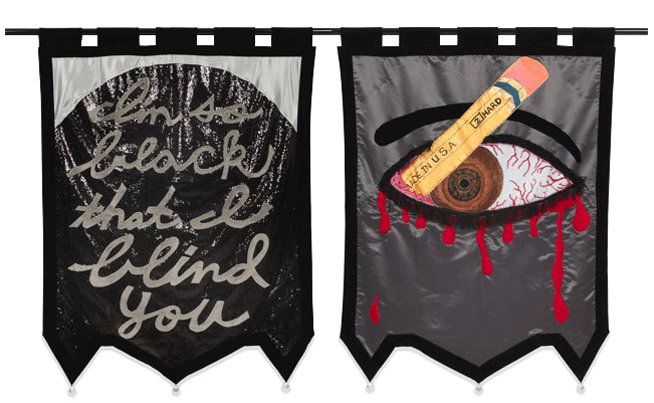
Cauleen Smith in Nylon Magazine
March 20, 2017
NEW YORK – As artists and also activists, Deana Lawson, Maya Stovall, and Cauleen Smith are challenging the dominant gaze by reexamining representation relating to the lives of people of the African diaspora.
Curated during a time of rampant inequality, racial conflict, and general social unrest in America, the 78th Whitney Biennial offers a profound reflection on social and political issues prevalent in our society right now. The exhibition features a diversity of talents, but three artists stood out to me as being particularly representative of the state of this country today. As artists and also activists, Deana Lawson, Maya Stovall, and Cauleen Smith are challenging the dominant gaze by reexamining representation relating to the lives of people of the African diaspora.
From family portraits to the kinship of friends, photo-based artist Deana Lawson utilizes themes such as community and sexuality to examine the complexities of life in America for people of African descent. Inspired by the formal traditions of portraiture and family albums, Lawson creates work that pushes viewers to construct their own impressions relating to the lives of her subjects, who often start out as strangers.
When looking at Lawson’s photograph, “Signs,” I was immediately drawn to the camaraderie of the men in the image. Throwing up “signs” and other hand gestures, the subjects commanded complete authority of their presence within the image. In engaging with this powerful dynamic, Lawson allows her subjects to confront stereotypical perceptions related to black identity and subvert them, simply by honoring these men as worthy of artistic attention. Through her art, Lawson rejecting commonly held Western canon beliefs that have sought to impose a singular narrative on the black experience, and instead allows her subjects to craft their own narrative within the form.
Hailing from Detroit, Michigan, Maya Stovall is a multidisciplinary artist who utilizes her surroundings and creates performance art and an ethnography within her practice. In the video performances, “Liquor Store Theatre,” Stovall enlists her neighbors living in the McDougall-Hunt section of Detroit, who then perform ballet and modern dance movements on the sidewalks and outside of local liquor stores. In these festive performances, Stovall and her neighbors engaged with residents and invited her participants to share their perspectives on Detroit’s past and imminent future.
Detroit and its residents have become known for their resilience; many declare their civic pride and speak optimistically regarding the changes taking place in the city. Within the piece, the liquor store is depicted as a community touchstone for neighborhood fellowship. The performance and the act of playing music act as a vital form of therapy needed to combat the daily stressors related to living in a city in flux. In acknowledging the value of community in local establishments such as the liquor store, Stovall is paying homage to cultural traditions and institutions that directly correlate to Detroit’s long-standing black community, and give them the respect they deserve—not a small thing at a time when interest in Detroit tends to revolve around gentrifiers descending on the city, interested only in its cheap real estate.
Trained as a filmmaker, Cauleen Smith is an interdisciplinary artist whose work is cemented in the role imagination plays in one’s daily life. Crafted in response to the escalation of police brutality and racial inequality within America, Smith’s hand-stitched series of 16 banners, entitled “In the Wake,” serve as a reflection of her weariness and anger about this country’s continued legacy of racial violence. The messages shown on one side the banners display phrases that embody the emotional turmoil and physical and psychological hardships faced by black Americans. The other sides feature things like blood drops and writing utensils that serve as symbols of the change that needs to come. In creating work that prompts viewers to open their eyes to the horrors of racial discrimination, Smith is using her voice as a catalyst for promoting social awareness within a country that has historically forsaken its own citizens.
The Whitney Biennial has long had a pivotal role in showcasing American art in all its diverse glory. This year’s exhibition speaks to viewers in a way that encourages them to think critically about their placement in the world and how their voices can champion causes that can make this country a better place. As a platform to support new ideas and redefine current solutions, art has always served as a bridge to showcasing issues that we, as a country. collectively face.
Lawson, Stovall, and Smith take full control of the way they are perceived within their practices. In exploring identity and race, each artist serves as a cultural visionary and inspires individuals to take a stand for their own realities by recognizing the significance black lives have within the framework of this country.
For full article, visit Nylon.
